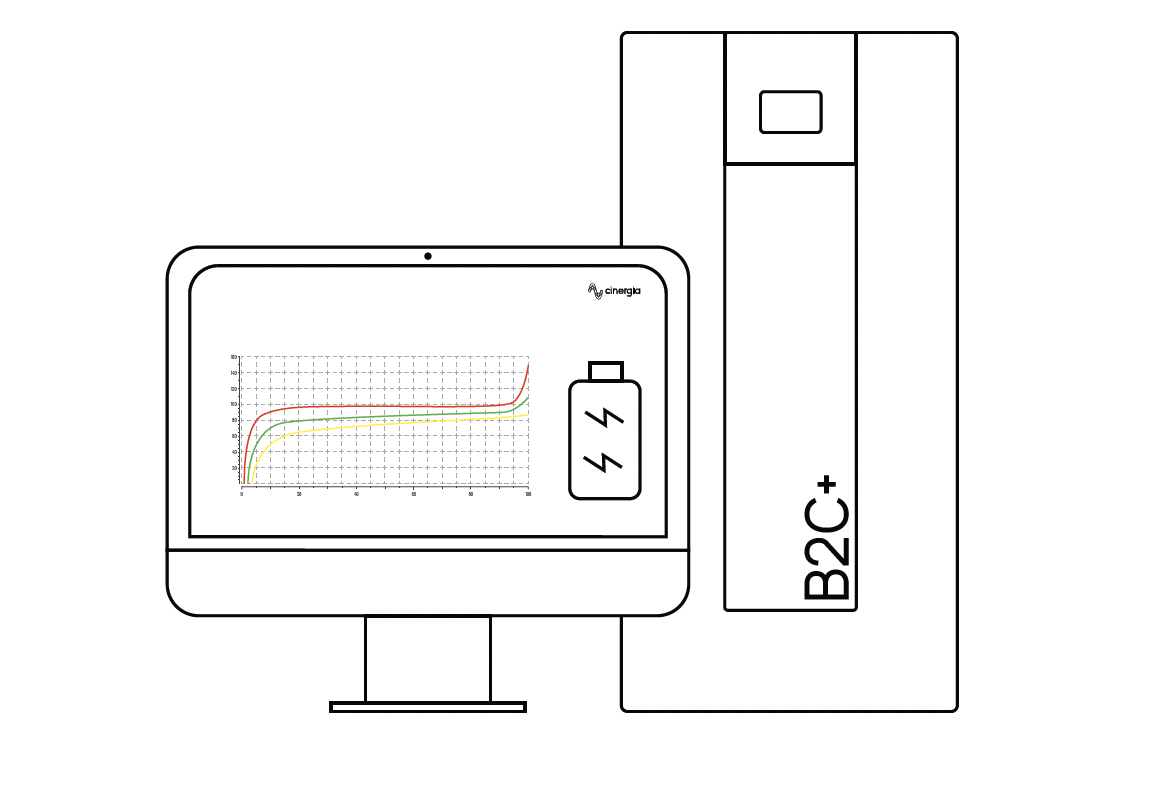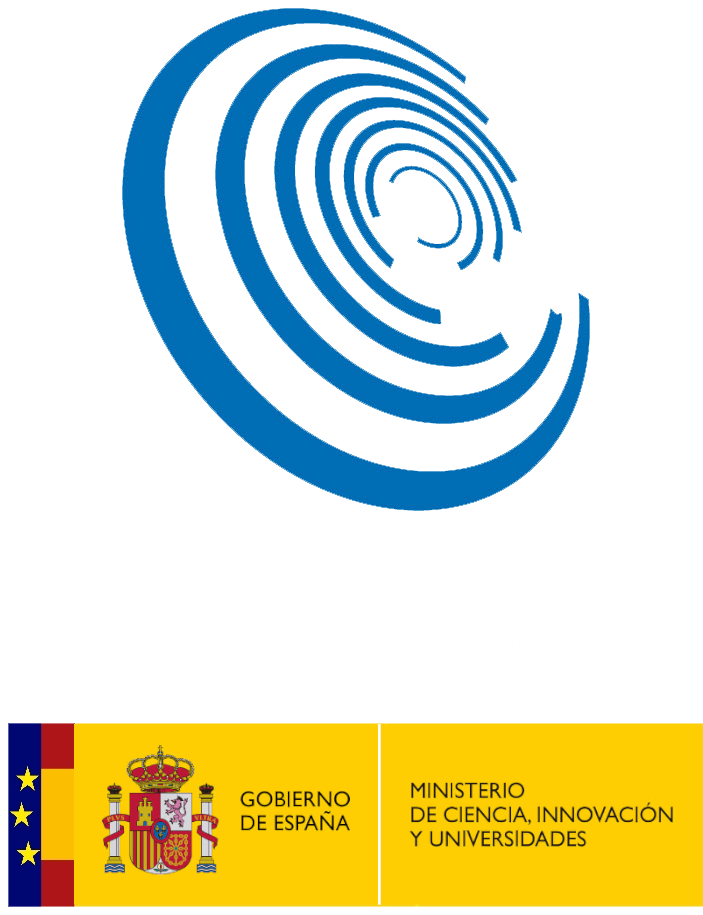news
Evaluate the performance of a battery
We have developed a module in battery testing to create a flexible and intuitive sequence of battery cycles
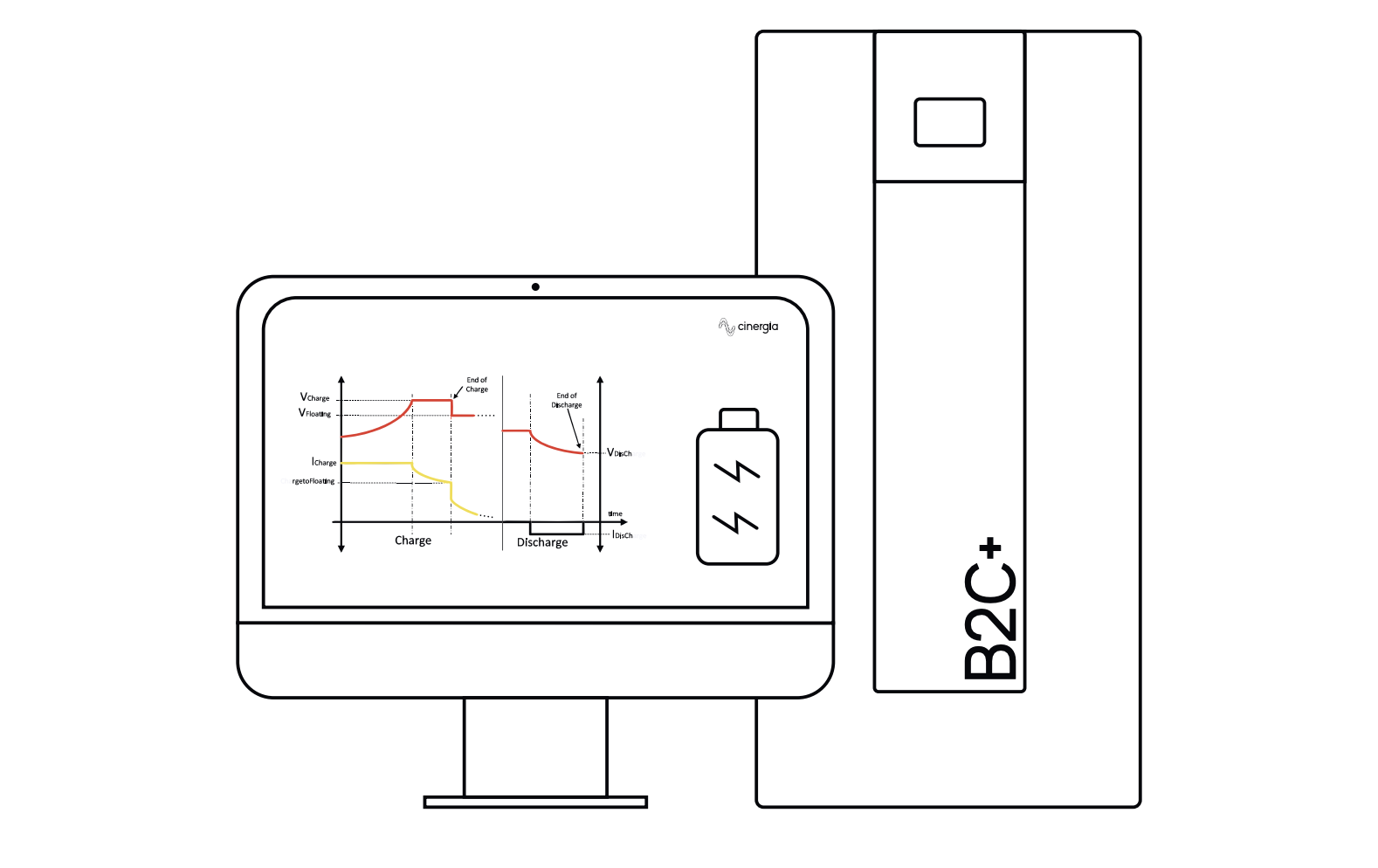
Our interface software is an indispensable tool for power electronic engineers to access all the functionalities of its converters. It also allows us to precisely control on charge, discharge and cycling of any kind of battery.
On the one hand, the basic parameters of this software include fast charge, float voltages and the charge and discharge of currents. On the other hand, advanced parameters add Energy (Ah) and time as transition conditions.
Advanced DC Software Application
Although one of the main challenges in the battery market is conditioned by its life cycle, the investment in constant innovation from R&D teams enables the development of the most recent technologies to extend their useful life. In order to evaluate the performance of batteries, it is necessary to execute charge and discharge tests to find the best shape.
CINERGIA has developed a specialized module in battery testing to create flexible and intuitive sequence of battery cycles. Our interface software is an essential tool for power electronic engineers to access to all functionalities of its converters. It also allows us to precisely control on charge, discharge and cycling of any kind of battery. On the one hand, basic parameters of this software include fast charge, float voltages and the charge and discharge of currents. On the other hand, advanced parameters add Energy (Ah) and time as transition conditions.
Clear and intuitive design
CINERGIA offer a solution that is characterized by a clear and intuitive design. Its easy handling saves us time in the test setup.
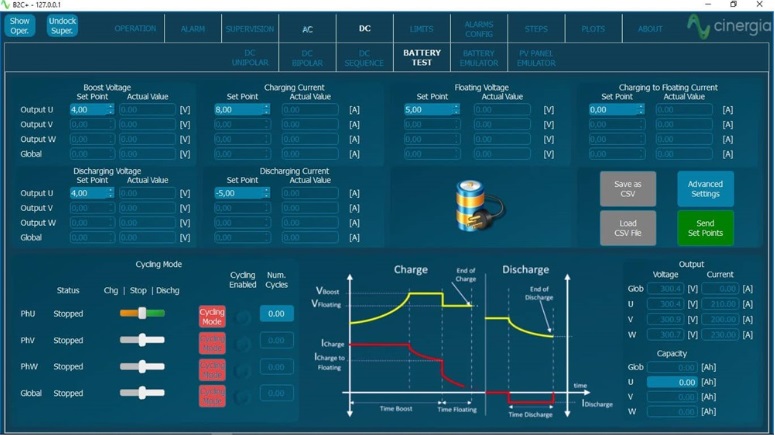
Control buttons
Save as CSV - Save all parameters of the configuration in a CSV file, to use anytime.
Load as CSV - Load parameters of configuration from the CSV file.
Advanced Settings - Change the windows to basic or advanced parameters.
Send Set Points - Send all parameters to the converter to start the test.
Parameters
Boost Voltage (VBoost) - Maximum voltage of the battery. The equipment will charge the battery until it reaches this voltage.
Charging Current (I Charging) - Maximum accepted input current of the battery. The higher the current is, the faster will be charged the EUT, but be sure that this parameter is lower than the maximum current accepted of the battery.
Floating Voltage (VFloating) - Once the battery has reached the boosting voltage (the maximum voltage), the converter will make the EUT to remain in the floating voltage which is lower than the boost voltage.
Charging to Floating Current (I Charge to Floating) - To make the battery remain in the floating voltage some current must flow inside the it, otherwise it would lose voltage. Once this current reaches the introduced value, the equipment will start discharging the battery.
Discharging Voltage (VDischarging) - It is the minimum voltage where the converter will make the battery reach. A lower voltage than the one accepted for the EUT would make it irreversible damages in the battery.
Discharging Current (I Discharging) - The Cinergia equipment will discharge the battery until the discharging voltage with this current. It is the only parameter that must be negative.
Advanced Parameters
Boost Time - Maximum time (in seconds) that the equipment will be boosting. The maximum time is almost 4 months and the minimum are 0s.
Floating Time - Maximum time (in seconds) that the equipment will be floating. The maximum time is almost 4 months and the minimum are 0s.
Time Transition - Maximum time (in seconds) that the equipment will be waiting for the transition (from charged to discharge). The maximum time is more than 1 day, and the minimum is 0s.
Time Discharge - Maximum time (in seconds) that the equipment will be discharging. The maximum time is more than 1 day, and the minimum is 0s.
Ah Stop Charge - Maximum value of Ah that the converter will allow to charge the battery. The maximum is 1000000000Ah and the minimum is 0Ah.
Ah Stop Discharge - Maximum value of Ah that the converter will allow to discharge the battery. The maximum is 0Ah and the minimum is -1000000000Ah.
There is a figure that illustrates all that parts above mentioned:

Voltage & Current Indicators
This window contains indicators of the voltage and current for each channel. It also has another parameter to be introduced in the converter: the amps per hour of the battery. This value must be negative and is the value that indicates the capacity of the battery.

For example, if the battery has a capacity of 100Ah, it means that can deliver 10A during 10h or 1A during 100h and so on. To introduce this parameter, write it to the corresponding blue window depending on the channel to be introduced and press intro in the keyboard.
Cycling Mode Control

Status of the converter - It is an indicator that shows the status in the actual moment.
Status selector - The user must select the status by moving the slider right or left (right goes to discharge and left to charge. The slider in the middle means Stop)
Cycling selector - In this part of the window, the user can enable the cycling mode of the equipment. If the cycling mode is selected, the corresponding LED is illuminated.
It is also possible to determinate the number of cycles that the equipment will make to the EUT. Once all the cycles are completed, the equipment will stop automatically.
All these operations can be done for each channel as the figure shows. The first row is for the U channel, the second for the V, the third for the W and the last for the parallel mode (gl
Vous pouvez télécharger le dossier complet ici
TÉLÉCHARGERAutres articles
news
Do you need to emulate electrical loads?
Our EL+ vAC AC is a current source designed to emulate the electrical behavior of passive and active devices connected to the grid
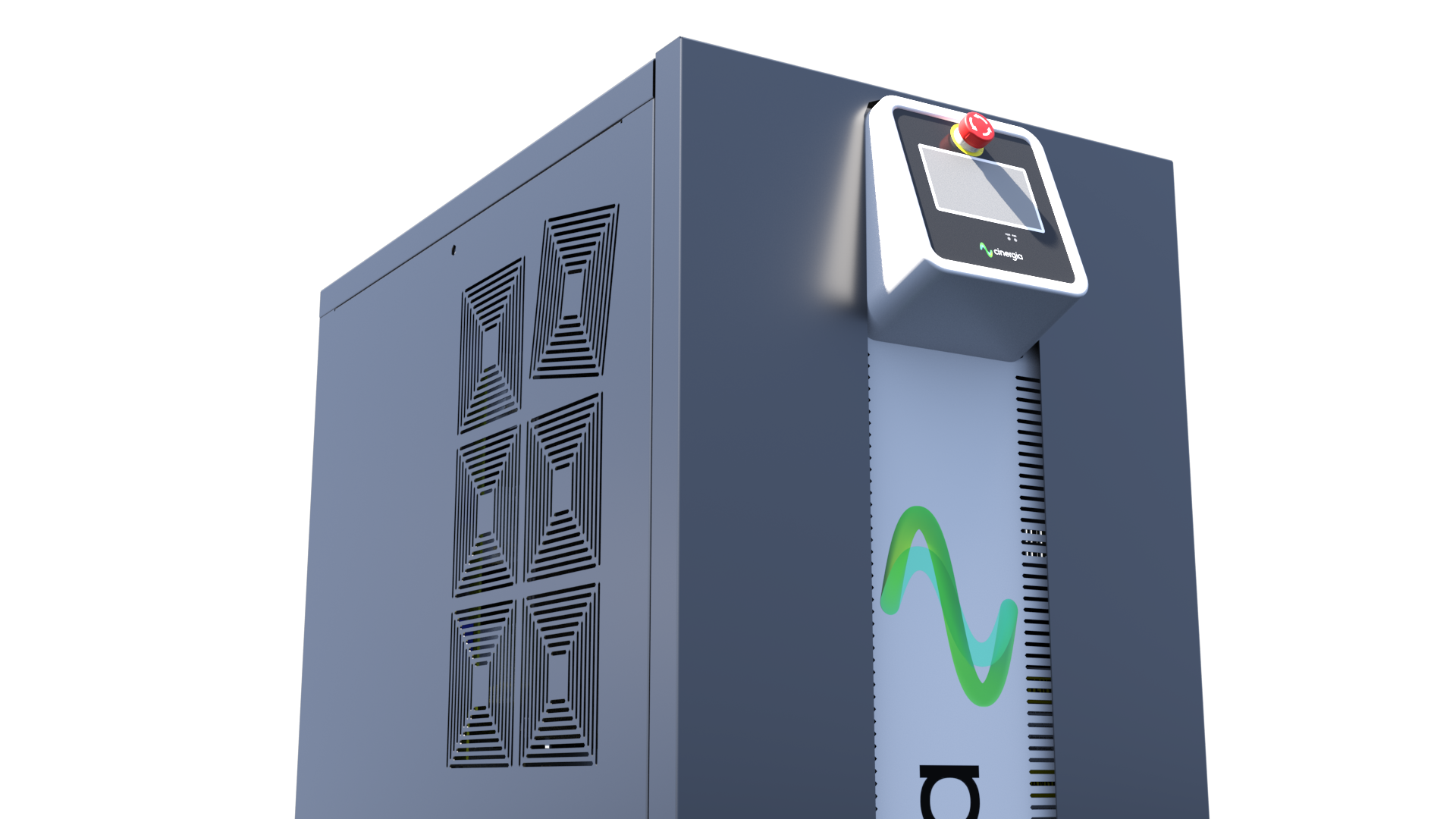
news
40 and 50kVA isolation transformers are no longer external cabinets
Discover our two new isolation transformer models
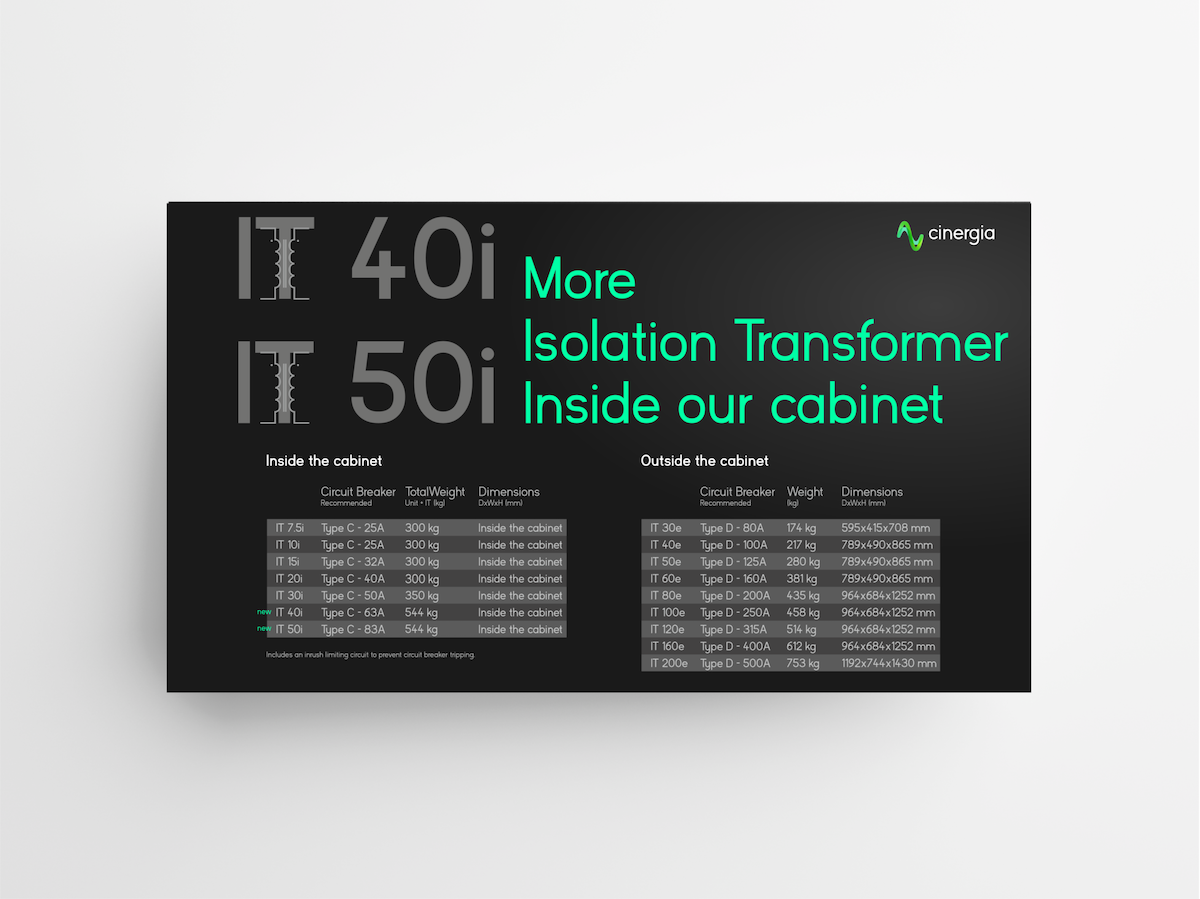
news
Cinergia at Upcoming Industry Events
We're excited to announce our participation in several key industry events in the coming months. Mark Your Calendars!
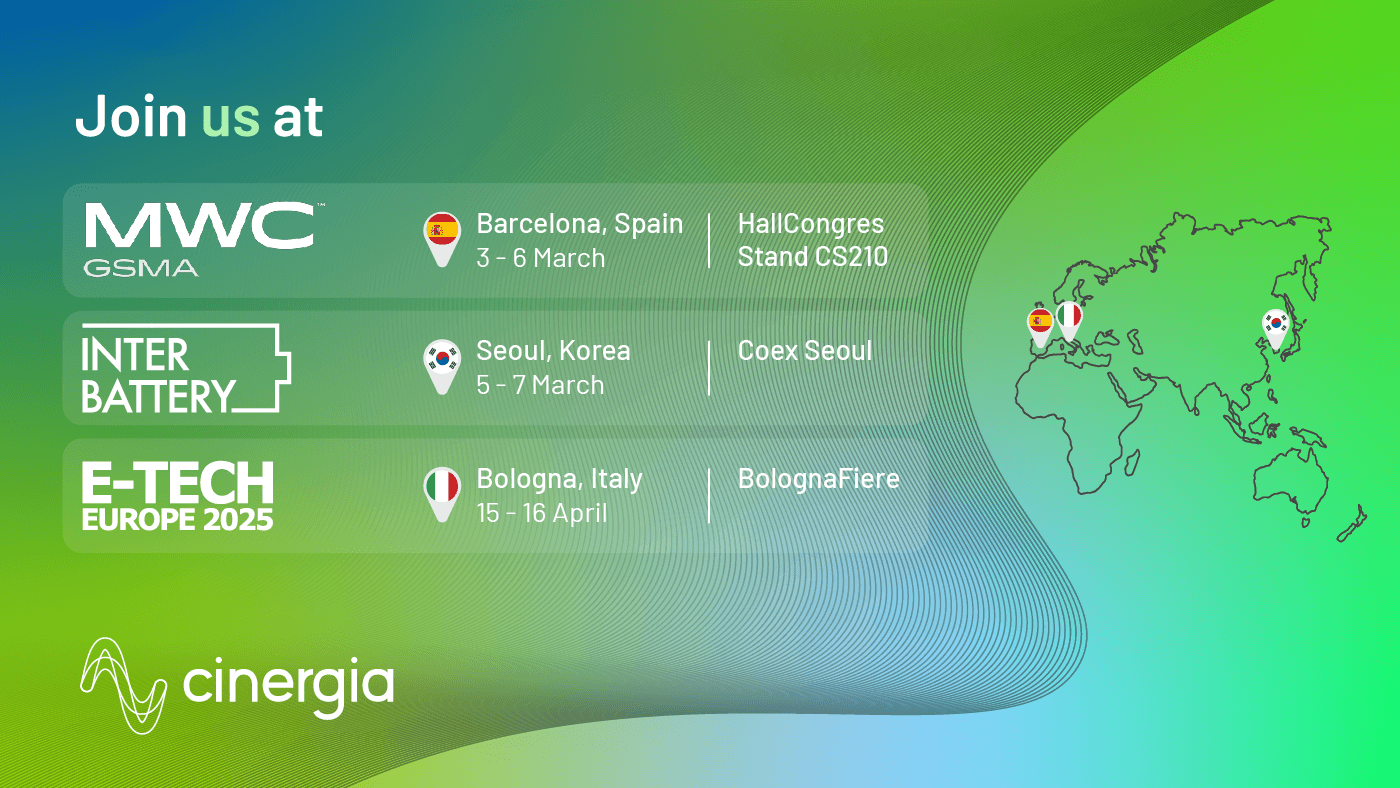
news
Discover our Battery Emulator solution
Our Battery Emulator is combined with a regenerative converter designed to behave like real batteries
